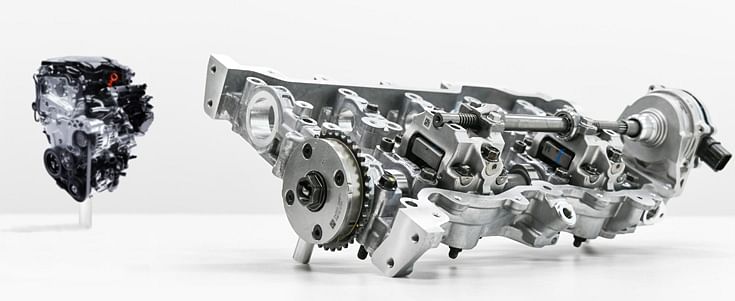Hyundai’s new CVVD tech improves performance, efficiency and slashes emissions
The world-first technology, which controls timing of valve opening and closing according to driving conditions, is set for mass production in future Hyundai and Kia vehicles
Hyundai Motor Group has announced development of the world’s first Continuously Variable Valve Duration (CVVD) technology which will feature in future Hyundai and Kia vehicles. The innovation was revealed at Hyundai Motorstudio Goyang on Wednesday alongside the Smartstream G1.6 T-GDi, the first engine to feature the technology.
“The development of the CVVD technology is a good example how Hyundai Motor Group is strengthening our powertrain technology,” said Albert Biermann, president and Head of Research and Development Division at Hyundai Motor Group. “We will continue our innovation efforts to bring forth paradigm shifts and ensure sustainability of our business model.”
World-first innovation: Continuously Variable Valve Duration
Until now, an internal combustion engine’s performance and efficiency have been governed by variable valve control technology that adjusts the timing of valve opening and closing and depth of the valve’s opening, with engine power produced through the fuel intake-compression-expansion-exhaustion cycle.
Typical variable valve control technologies manage the timing of the valve’s opening and closing (as in Continuously Variable Valve Timing - CVVT) or control the volume of air admitted by adjusting the depth of the opening (Continuously Variable Valve Lift - CVVL). Previous variable valve control technologies could not regulate valve duration, as the valve’s closing timing was subordinate to opening timing and could not respond to diverse driving situations. CVVD takes the technology in a new direction by adjusting how long a valve is open.
When the vehicle is maintaining a constant speed and requires low engine output, CVVD opens the intake valve from the middle to end of the compression stroke. This helps to improve fuel efficiency by reducing the resistance caused by compression. On the other hand, when engine output is high, such as when the car is driving at a high speed, the intake valve is closed at the beginning of the compression stroke to maximize the amount of air used for the explosion, enhancing torque to improve acceleration.
 New Smartstream G1.6 T-GDi engine
New Smartstream G1.6 T-GDi engine
Unveiled alongside the new CVVD technology is the new Smartstream G1.6 T-GDi Engine, a V4 gasoline turbo unit with 180 horsepower and 27.0kgm of torque. The new powertrain is the first to utilise the Group’s new CVVD technology and also features Low-Pressure Exhaust Gas Recirculation (LP EGR) to further optimize fuel efficiency.
The exhaust gas recirculation system returns some of the gas burnt by the engine to the combustion chamber, producing a cooling effect and reducing the emission of nitrogen oxides. The G1.6 T-GDi also features a low-pressure system that redirects the burnt emission gas to the front of the turbocharger compressor, rather than the intake system, to increase efficiency under the high load condition.
Additionally, the new unit has an Integrated Thermal Management System that quickly heats or cools the engine to an optimal temperature, and a strong direct spray system that achieves 350bar, surpassing the 250bar of the previous T-GDi engine. In addition, engine friction is reduced by 34% with the application of low friction moving parts.
According to Hyundai, the new Smartstream G1.6 T-GDi engine will power the Hyundai Sonata Turbo, which is set for introduction in the second-half of this year. This premiere will mark the first in a series of new Hyundai and Kia vehicles featuring the engine. Information on the first Kia vehicle to feature the engine will be revealed later on, nearer to the vehicle’s launch date. Stay tuned.
Also read: Hyundai Motor Group unveils wireless EV charger and automated parking systems concept
RELATED ARTICLES
First BYD EV rolls off the line at new plant in Brazil
Chinese EV maker takes just 15 months from breaking ground to producing the Dolphin Mini, the first locally manufactured...
Volkswagen Group honours 10 outstanding suppliers, strengthens strategic collaboration
The 21st Volkswagen Group Award recognized suppliers for outstanding performance and contribution over the past year. VW...
Volkswagen Group sells 465,500 BEVs worldwide in first-half 2025, up 47%
With strong growth in Europe (+89%) and the USA (+24%), despite a sales decline in China (-34%), the VW Group’s global B...





 By Autocar Professional Bureau
By Autocar Professional Bureau
 03 Jul 2019
03 Jul 2019
 13627 Views
13627 Views









